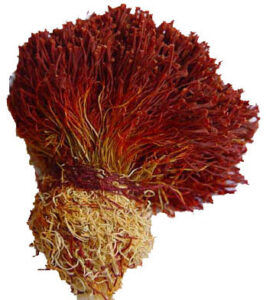Iran Walnut Information
Iran Walnut page
History of walnut
The first historical accounts of walnut trees growing under civilized cultivation was in ancient .Iran Walnut Information.
food or non-food applications of walnuts – benefits of walnut
Babylon (Iraq) about 2000 B.C.; however, walnuts have evidently been attached to mankind much earlier by excavations from cave fossils as suggested by archeologists. Iran Walnut Information
There is a reference point in the Biblical record in the Old Testament, that King Solomon was growing nuts (identified as walnuts by some translators), however, the likelihood of these nuts being other than almonds is very remote, because of the almond nut image that was used as symbols commonly in Hebrew icons and stone carving displays in Jerusalem inside Solomon’s temple. The adaptability of almonds is much more likely for almond trees to succeed than for walnut trees in the climate and soils of Israel.
It is difficult to trace the native home of the walnut tree, but ancient Romans believe it originated in Persia. Early cultivation spanned from southeastern Europe to Asia Minor to the Himalayas. Greek usage of walnut oil dates back to the fourth century B.C., nearly a century before the Romans.
The oil of the nut has been used for centuries in the preparation of fine paints for artists. Trees can live to an age of approximately 60 years and grow to about 60 feet tall at maturity. Iran Walnut Information
Medical benefits and claims
Raw walnuts contain glyceryl triacylates of the n-3 fatty acid alpha-linolenic acid (ALA), which is not as effective in humans as marine n-3 fatty acids, and (mostly insoluble) antioxidants.
Roasting reduces antioxidant quality. In 2010, the Journal of the American College of Nutrition said that walnuts and walnut oil improve reaction to stress. Iran Walnut Information
Consumption of walnuts has been shown to increase fat oxidation and reduce carbohydrate oxidation, demonstrating improved use of body fat in overweight adults. Walnuts have been shown to decrease the endothelial dysfunction associated with a high-fat meal.
Aged rats fed diets containing 2% to 6% walnuts showed reversal of age-associated motor and cognitive function, but a 9% walnut diet impaired performance. Iran Walnut Information
On October 11, 2006, ScienceDaily published a report which stated “New research shows that consuming a handful of raw walnuts along with meals high in saturated fat appears to limit the ability of the harmful fat to damage arteries,” and attributed the result to a 2006 article in the Journal of the American College of Cardiology.
The lead researcher, Emilio Ros, MD, PhD, was quoted as saying “People would get the wrong message if they think that they can continue eating unhealthy fats provided they add walnuts to their meals.
” Funding for the study was provided by the California Walnut Commission, an industry marketing agency. In order of importance we know walnuts contain omega 3 and 6 fatty acids, manganese, copper and tryptophan.
Starting with omega 3 fatty acids we have read many times how beneficial they are when it comes to cardiovascular protection by means of helping lower bad cholesterol levels.
In fact, the FDA approved the following health claim on March 2004 in regards to walnuts: “Supportive but not conclusive research shows that eating 1.5 oz of walnuts per day, as part of a low saturated fat and low cholesterol diet, and not resulting in increased caloric intake may reduce the risk of coronary heart disease.
” A less known fact is that these acids can have positive effects on inflammatory skin diseases such as eczema and psoriasis. As such, walnuts can also be considered as skin food, meaning that they actually help you achieve a softer and smoother complexion
Harvest
English walnuts are typically harvested late August through September, and make a great addition to the frugal pantry (It’s hard to argue with free food). So, grab some buckets and unleash your inner squirrel on a tree near you. Iran Walnut Information
1. Check for ripeness. Wait until nuts with split hulls begin to appear on the ground in number. Then, break open a few sample nuts to check for ripeness. English walnuts are ready for harvest when the tissue between the kernel and the shell turns brown.
2. Gather the walnuts. Once ready, you can harvest the nuts one of two ways: either gather them off of the ground as they fall, or shake the tree to dislodge them.
3. Remove the hulls. Pull the hulls off to reveal the shelled nuts. (The hulls should come off easily, if you’re collecting the nuts at the right time.) Note: You may want to wear gloves to keep your hands clean.
4. Rinse. Rinse the shells off with a high-powered hose to remove the tannins.
5. Inspect the quality. Inspect the walnuts for cracked shells, and discard any that show signs of damage.
6. Dry the nuts. Allow the nuts to air dry for two weeks.
7. Test for dryness. Remove several nuts from the shell, and try to break them in half. If they break cleanly, the nuts are dry and ready for use.
Common walnut diseases
Walnut Blight: Walnut blight is infection by the bacteria Pseudomonas juglandis or Xanthomonas campestris pv. Juglandis. Walnut blight causes black spots on the leaves and blotches and holes on the nuts. It can also kill shoots.
When the male catkins (a drooping cluster of blooms) are affected, the nuts can suffer heavy damage. It does the most damage in cool and wet weather around flowering time.
Walnut blight mainly affects young growth and nuts. A soil pH above six helps prevent Walnut blight. Pruning to allow good aeration and avoiding excessive wetness and nitrogen also helps. Damaged parts should be cut and burned.
A fungus fighting Bordeaux mixture, a mix of finely ground lime and powdered copper sulfate, available commercially, may be applied. Walnut Leaf Blotch:
The fungus popularly called Walnut anthracnose aka Marssonina juglandis, Gnomonia leptostyla, or Marssonella juglandis, causes nuts to turn black then fall.
It causes brown blotches on nuts and leaves, a large number of which fall. Leaf blotch spreads usually spreads in May and early June during wet weather.
Since it survives over the winter on leaf litter, fallen leaves should be burned. A Bordeaux mixture can sometimes help fight leaf blotch. Blackline: Blackline is a viral disease that gradually kills the top of walnut trees and causes a proliferation of shoots growing from their roots. It is common to the San Francisco Bay Area, northern California, and parts of Oregon.
It is impossible to control black line, but the dead top should be removed and three or four suckers developed for a new canopy. Walnut Husk Fly: The small, colorful Walnut Husk Fly spends most of its life underground, emerging in the summer to lay eggs in the hulls of maturing walnuts. The eggs, about 15 in each hull, turn into maggots.
The maggots feed in inside the walnut from three to five weeks. When they are mature, they’re yellow with black mouths and are about a quarter of an inch long. They drop to the ground and burrow into the soil to start another cycle The hulls can turn black, mushy.
The meat can fail to grow or become moldy. Sometimes the shell will be stained but the nut is still good to eat. Dispose of infected hulls in a sealed bag. GF-120 and Sinosad (Monterey Garden Insect Spray and other brand names) are both used to kill the Walnut Husk Fly. They ordinarily mixed with molasses to form a bait that is sprayed onto trees.
Specification
QC Accredited Laboratory & Quality Control Department Of Farzin Rock Stone Co. ANALYSIS REPORT PRODUCT NAME COUNTRY OF ORIGIN Iran GRADE … pcs.
Kernel in 100gr Physical Characteristics Value Method Adhering hull material Absent Visual Dark stained 1% Max Visual Shell pieces and blanks Max 1 in each carton Visual Impurities (no glass material or live insects) Absent Visual inspection of 100 kg Split Kernel 2% Max Visual CHEMICAL CHARACTERISTICS Value Method Moisture 5% Max ISO 665 Free fatty acids 0.7 % Max ISO 660 Peroxide value meq/kg fit 1 Max ISO 3960 MICROBIOLOGICAL CHARACTERISTICS Value Total viable count/g 10000 CFU/g ISO 4833 Aflatoxin B1 Absent Sampling EC directive validated HPLC method Aflatoxin B1+B2+G1+G2 Absent Validated HPLC method E.coli Absent ISO 7251 Salmonella/ 25 g Absent Natural CHARACTERISTICS Standards Color Light Brown and white color inside Flavor Typical Almond flavor, no rancid or off-flavor SHELF LIFE & STORAGE SPECIFICATIONS Three years at dry, ambient and clean condition, away from direct heat and sunlight, 15°C.
Health benefits of Persian Walnut kernel
Health benefits of Persian Walnut kernel Walnuts are full source of energy and contain many health benefiting nutrients, vitamins, antioxidants and minerals that are necessary for human health. Persian Walnuts are full in monounsaturated fatty acids (about 72%) like oleic acid and an special source of all important omega-3 essential fatty acids like linoleic acid, alpha linolenic acid (ALA) and arachidonic acids. Regular intake of walnuts in the diet help to lower total as well as LDL or “bad cholesterol” and increase HDL or “good cholesterol” levels in the blood. They also very special source of minerals like manganese, copper, potassium, calcium, iron,magnesium, zinc, and selenium.
Copper is a cofactor for many vital enzymes, including cytochrome c-oxidase and superoxide dismutase (other minerals function as co-factors for this enzyme are manganese and zinc). Zinc is a co-factor in many enzymes that regulate growth and development, sperm generation, digestion and nucleic acid synthesis.
Selenium is an important micronutrient, which functions as co-factor for anti-oxidant enzymes such as glutathione peroxidases. Eating 25 g daily provides about 90% of RDI (recommended daily intake) ofomega-3 fatty acids.
Research studies have suggested that n-3 fatty acids by their virtue of anti-inflammatory action helps to lower the risk of blood pressure, coronary artery disease, colon and breast, strokes and prostate cancers. Scientists have recently discovered that walnuts have highest levels of popyphenolic antioxidants than any other common edible nuts. 100 g of walnuts contain13500 µmol TE (Trolex equivalents) of oxidant radical absorbance capacity (ORAC).
Eating as few as six to seven average sized nuts a day could help scavange disease causing free radicals from the body. These nuts are packed with many important B-complex groups of vitamins such as riboflavin, niacin, thiamin, pantothenic acid, vitamin B-6, and folates.
Walnuts are excellent source of vitamin E, especially rich in gamma-tocopherol; contain about 21 g per 100 g (about 140% of daily-required levels). Vitamin E is a powerful lipid soluble antioxidant, required for maintaining the integrity of cell membrane of mucus membranes and skin by protecting it from harmful oxygen free radicals.
Persian Walnuts are very good source of many phyto-chemical substances that may contribute to their overall anti-oxidant activity, including melatonin, ellagic acid, vitamin E, carotenoids, and poly-phenolic compounds.
These compounds have potential health effects against inflammation, aging, cancer, and neurological diseases.
Walnut kernel nutrition
Walnut kernel nutrition Walnuts are the best source of omega-3 fatty acids, a special type of fat that is essential for our bodies, but that the body cannot make. Nutrient Value per 100 grams Units Energy 618 kcal Protein 24.06 g Water 4.56 g Lactose 0.00 g Sucrose 1.00 g Walnuts rich in Vitamins Vitamin C 1.7 mg Riboflavin 0.130 mg Niacin 0.470 mg Vitamin B 6 0.583 mg Folic acid 0 mcg Pantothenic acid 1.660 mg Vitamin B 12 , added 0.00 mcg Vitamin A, IU 40 IU Tocopherol, gamma 28.48 mg Amino acids Valine 1.271 g Phenylalanine 1.094 g Leucine 1.684 g Glutamic acid 5.152 g



